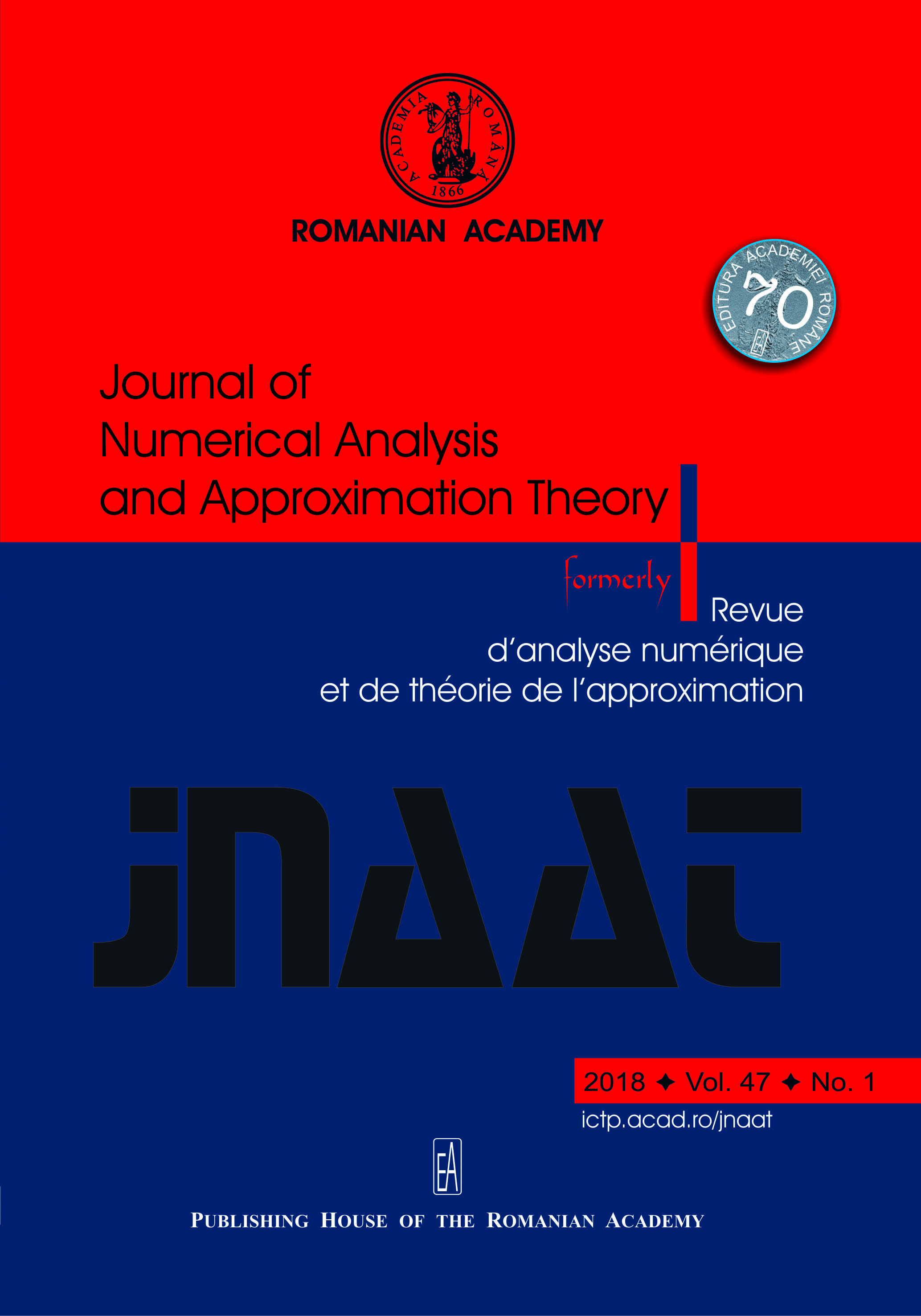Fourier series approximation for the Cauchy singular integral equation
DOI:
https://doi.org/10.33993/jnaat471-1127Keywords:
Singular integral equation, Cauchy operator, Galerkien method, Fourier seriesAbstract
Using the Fourier series as a projection in the Galerkin method, we approach the solution of the Cauchy singular integral equation. This study is carried in \(L^2\). Numerical examples are developped to show the effectiveness of this method.
Downloads
References
D. Porter, D. S. G. Stirling, Integral Equations. Cambridge University Press, 1990, https://doi.org/10.1017/cbo9781139172028. DOI: https://doi.org/10.1017/CBO9781139172028
K. Atkinson, Theoretical Numerical Analysis: Functional Analysis Framework, Springer, New York, 2001, https://doi.org/10.1007/978-0-387-21526-6. DOI: https://doi.org/10.1007/978-0-387-21526-6
Rekha P.Kulkarni, On Improvement of the Iterated Galerkin solution of the second kind integral equations, Journal of numerical mathematics 13 (2005) 3, p.205-218, https://doi.org/10.1163/156939505774286139. DOI: https://doi.org/10.1515/156939505774286139
M. Ahues, F. D. d'Almeida, R. R. Fernandes, Piecewise constant Galerkin approximations of weakly singular integral equations, Inter. J. P. A. M. 55 (4) (2009) 569-580.
A. Mennouni, A projection method for solving Cauchy singular integro-differential equations, Applied Mathematics Letters, 25 (6) (2012) 986-989, https://doi.org/10.1016/j.aml.2011.11.012 DOI: https://doi.org/10.1016/j.aml.2011.11.012
A. Mennouni, Piecewise constant Galerkin method for a class of Cauchy singular integral equations of the second kind in L2, Journal of Computational and Applied Mathematics, 326 (2017) 268-272, https://doi.org/10.1016/j.cam.2017.05.028. DOI: https://doi.org/10.1016/j.cam.2017.05.028
A. Zygmund, Trigonometric Series, The University Press, Cambridge, 1959.
K. R. Davidson, A. P. Donsig, Real Analysis and Applications, Springer, New York, 2009, https://doi.org/10.1007/978-0-387-98098-0. DOI: https://doi.org/10.1007/978-0-387-98098-0
Published
Issue
Section
License
Copyright (c) 2018 Journal of Numerical Analysis and Approximation Theory

This work is licensed under a Creative Commons Attribution 4.0 International License.
Open Access. This article is distributed under the terms of the Creative Commons Attribution 4.0 International License, which permits unrestricted use, distribution, and reproduction in any medium, provided you give appropriate credit to the original author(s) and the source, provide a link to the Creative Commons license, and indicate if changes were made.










